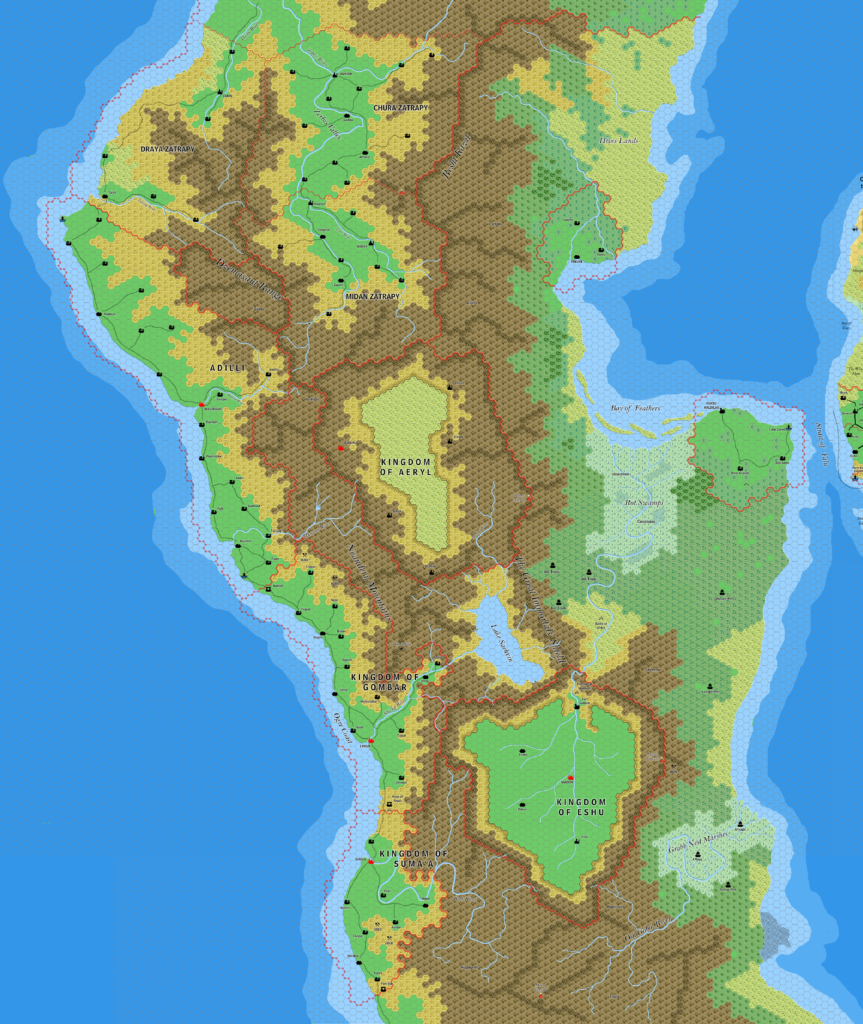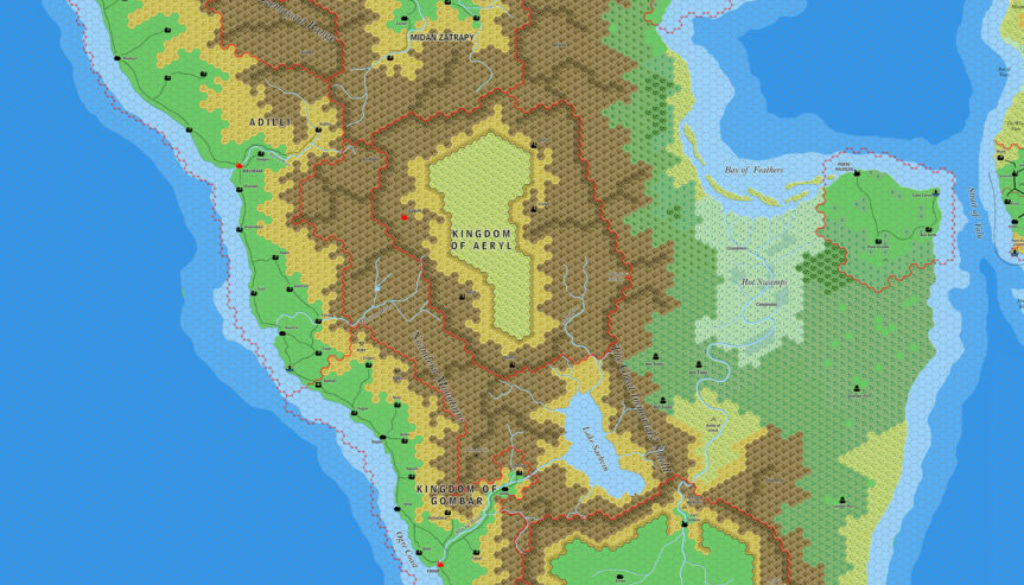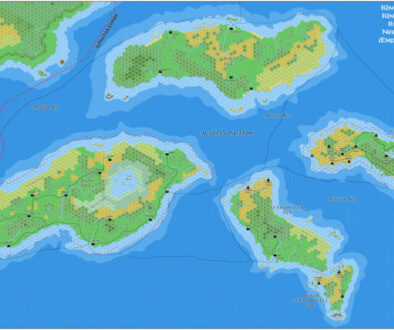Ramelin’s Arm of the Immortals, 8 miles per hex v1
Jose’s third oldest map dates to October 2015, one month before his first large batch of maps. It’s a very nice conversion of Dragon 200’s 24 mile per hex map, expanding it into a full 8 mile per hex treatment with details added as appropriate. In general, Gombar and Suma’a received a lot of nice new details, including named settlements to fill in the gaps in the terrain caused by zooming in the scale. On the other hand, Aeryl and Eshu remained rather bare, with few new details added.
This is also the first example (or at least the earliest remaining example) of Jose using fan-made maps to expand on the official sources. It would certainly not be the last, as he would go on to make extensive use of fan sources across his whole series of maps. In fact he went beyond just using fan sources, even adding new details to these areas.
This map reveals the true scope of Jose’s project, even at this early stage. It is a great hint of what was to come.
Fan-made Map by Jose Ignacio Ramos Lomelin (October 2015)

This is an original map created by one of Mystara’s excellent fan cartographers. For more information on the cartographer, including a gallery of all their maps, see also Appendix M: Mappers of Mystara.
Sources
- The Known World Grimoire: Lords of the skies, Dragon 200 (December 1993)
Fan Sources
References
- All of Jose’s maps at the Atlas of Mystara
- Jose’s entry in Appendix M: Mappers of Mystara (upcoming)
- Jose’s author page at the Vaults of Pandius
Chronological Analysis
This is a fan-made map. It was published in October 2015. The updated Atlas version of this map is not yet available. See also Appendix C for annual chronological snapshots of the area. For the full context of this map in Mystara’s publication history, see the upcoming Let’s Map Mystara 2015. (Please note that it may be some time before the project reaches this point.)
The following lists are from the Let’s Map Mystara project. Additions are new features, introduced in this map. Revisions are changes to previously-introduced features. Hex Art & Fonts track design elements. Finally, Textual Additions are potential features found in the related text. In most cases, the Atlas adopts these textual additions into updated and chronological maps.
Coming Soon




